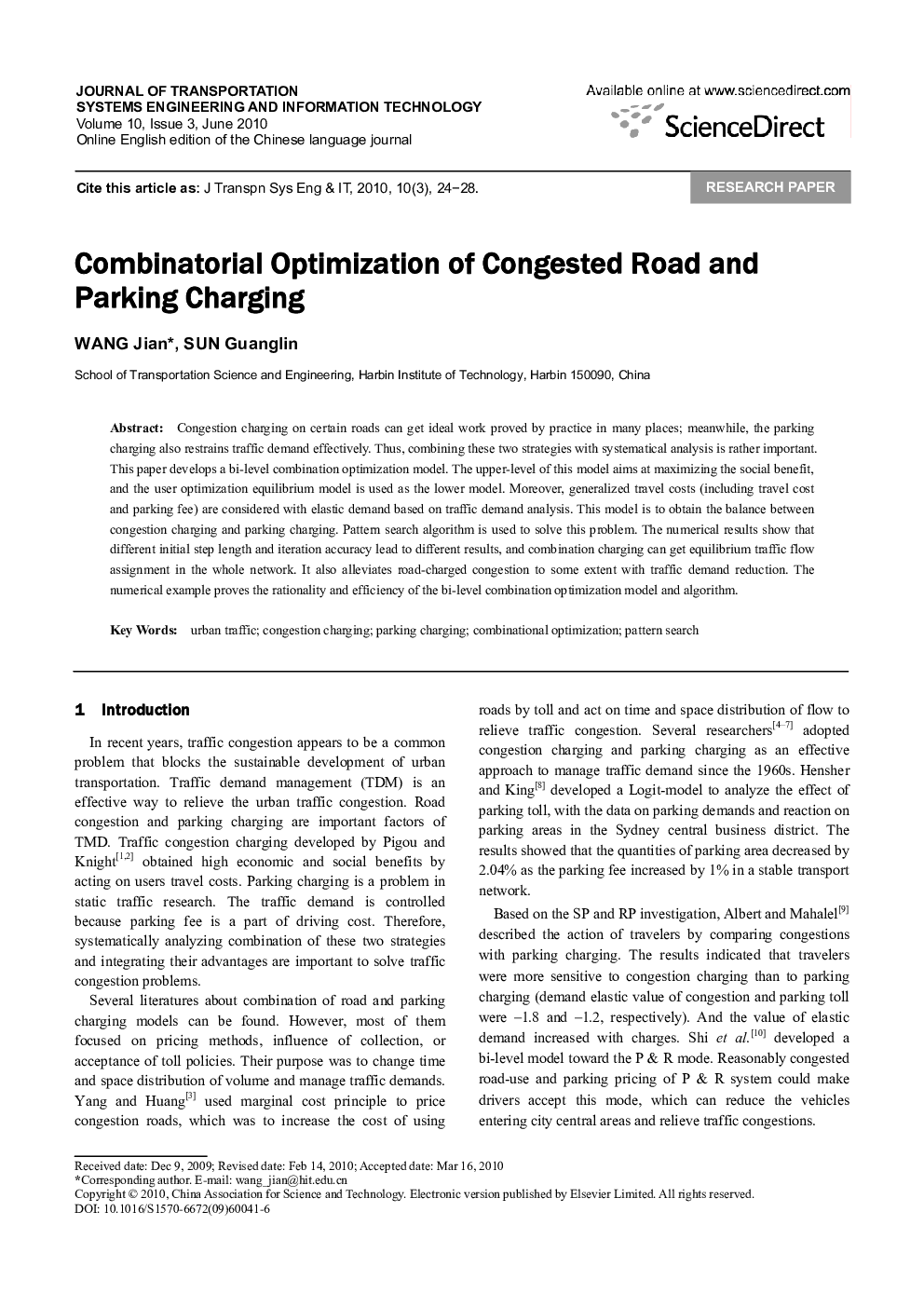| Article ID | Journal | Published Year | Pages | File Type |
|---|---|---|---|---|
| 108614 | Journal of Transportation Systems Engineering and Information Technology | 2010 | 5 Pages |
Congestion charging on certain roads can get ideal work proved by practice in many places; meanwhile, the parking charging also restrains traffic demand effectively. Thus, combining these two strategies with systematical analysis is rather important. This paper develops a bi-level combination optimization model. The upper-level of this model aims at maximizing the social benefit, and the user optimization equilibrium model is used as the lower model. Moreover, generalized travel costs (including travel cost and parking fee) are considered with elastic demand based on traffic demand analysis. This model is to obtain the balance between congestion charging and parking charging. Pattern search algorithm is used to solve this problem. The numerical results show that different initial step length and iteration accuracy lead to different results, and combination charging can get equilibrium traffic flow assignment in the whole network. It also alleviates road-charged congestion to some extent with traffic demand reduction. The numerical example proves the rationality and efficiency of the bi-level combination optimization model and algorithm.
摘 要确定性路段拥挤收费对收费路段的交通拥挤缓解有很好的效果,停车收费对抑制区域路网出行需求有重要影响,将两者组合起来系统研究具有重要意义。本文通过将路段拥挤收费与停车收费进行组合,分析组合收费策略下出行成本和出行需求变化的基础上,建立了双层规划模型。以收费社会效益最大化为目标,以拥挤收费和停车费可行区间为约束条件作为上层优化模型,下层模型是考虑广义交通出行费用(含行程费用和停车费用)的弹性需求条件下用户平衡模型,进行路段拥挤收费与停车收费组合优化。设计了模式搜索算法进行求解,得到不同初始步长和迭代精度下模型的最优解,数值计算结果表明,联合收费使得路网流量分布更加均衡,缓解了收费路段的交通拥挤,同时出行需求得到了一定抑制,证明该模型与算法具有有效性。
